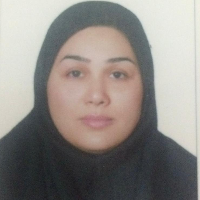Application of infill development in identifying areas of intervention in urban contexts (Case study: Tajrish area of Tehran region 1)
Following the unregulated population growth caused by migration, which often occurs in cities in developing countries; We are witnessing the rapid growth of cities and their horizontal expansion under the pretext of meeting the housing needs. Hence, the world today is facing major problems such as the instability of urban environments, energy crisis, depletion of natural resources and lack of proper management of urban lands. In addition to the above, it is very important to ignore and abandon the historical context that is considered the identity and capital of any land. Many planners are currently focusing on infill development as a strategy to address the challenges of managing urban growth and development, revitalizing urban centers, housing, and sustainable development. In Iran, the main potential for urban infill development is the old context, the issue of renovation and rehabilitation in these textures has been started for many years and continues due to the extent of the problem ahead, and turning to the discussion of internal development is an appropriate approach. In the field of urban planning and architecture and solving the above problems is considered. Urban infill policy has created an interaction between architecture, urban planning and restoration due to its interdisciplinary nature. Infill development has made it possible for people to become homeowners by protecting open urban spaces, restoration old neighborhoods, and reducing infrastructure costs. This research has tried to study and record the behavioral patterns of users of the physical environment by descriptive-analytical method and using documentary data, field studies, interviews and questionnaires and also by using the behavioral pattern analysis technique. The technique of analyzing behavioral patterns in urban spaces includes four main steps, the first step: preparing a map of the specified area of Tajrish Square to Ferdows Garden. Step 2: Record behavioral patterns that record the correct and systematic movements in the study space, which is the main work in the present technique. The third step is to prepare a map of behavioral patterns. This step is dedicated to accurately recording the information obtained in the second step on the map produced in the first step. The position of the moving elements on the map must be determined before recording the behavioral patterns. The fourth step is to analyze the schema of behavioral patterns. In fact, the fourth step is to answer the following questions: 1. Does the designed urban space conform to the behavior pattern of the people? 2. Are the spaces (spaces for pedestrians, riders, public transport, public, private, etc.) properly defined? Are they used by people in proportion to their function? 3. What parts of the space are more or less used by people? For example, congestion and confusion and lack of visibility in accesses, cause many problems that, improve access and improve the quality of urban landscape has been proposed. The suggestion of how to improve is specified in the analysis section. Another issue is the overcrowding of booksellers and fashion goods on the sidewalk, which in order to organize the vendors, anticipate cultural spaces and thus lead to economic prosperity. The results of the analysis of the cameras indicate that some coarse grains in the range cause impermeability and consequently create insecure areas. In fact, the items that were extracted using the behavioral pattern analysis technique for infill development, including attention to environmental issues, cultural and recreational spaces, urban landscape promotion, creating safe places, spatial rehabilitation, improving access, creating prosperity Economic, increasing permeability and mixing uses. In fact, the items that were extracted using the behavioral model analysis technique for infill development, including attention to environmental issues, cultural and recreational spaces, urban landscape promotion, creating safe places, spatial rehabilitation, improving access, creating economic prosperity. , Increasing the permeability and mixing of land uses, in order to implement these cases, with the help of neighborhood analysis, 4 methods of behavioral model and interviews with individuals and experts were provided.
- حق عضویت دریافتی صرف حمایت از نشریات عضو و نگهداری، تکمیل و توسعه مگیران میشود.
- پرداخت حق اشتراک و دانلود مقالات اجازه بازنشر آن در سایر رسانههای چاپی و دیجیتال را به کاربر نمیدهد.


